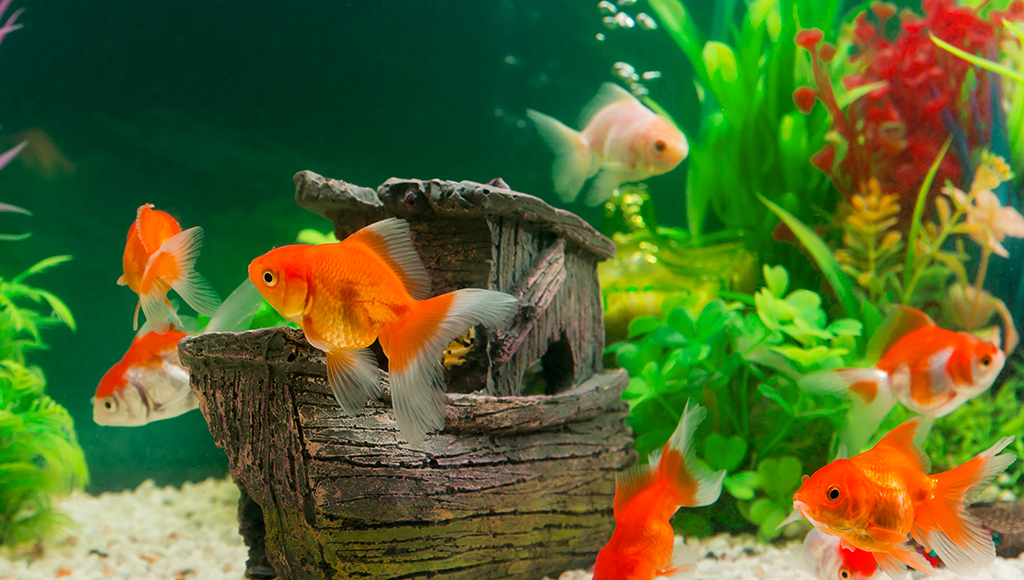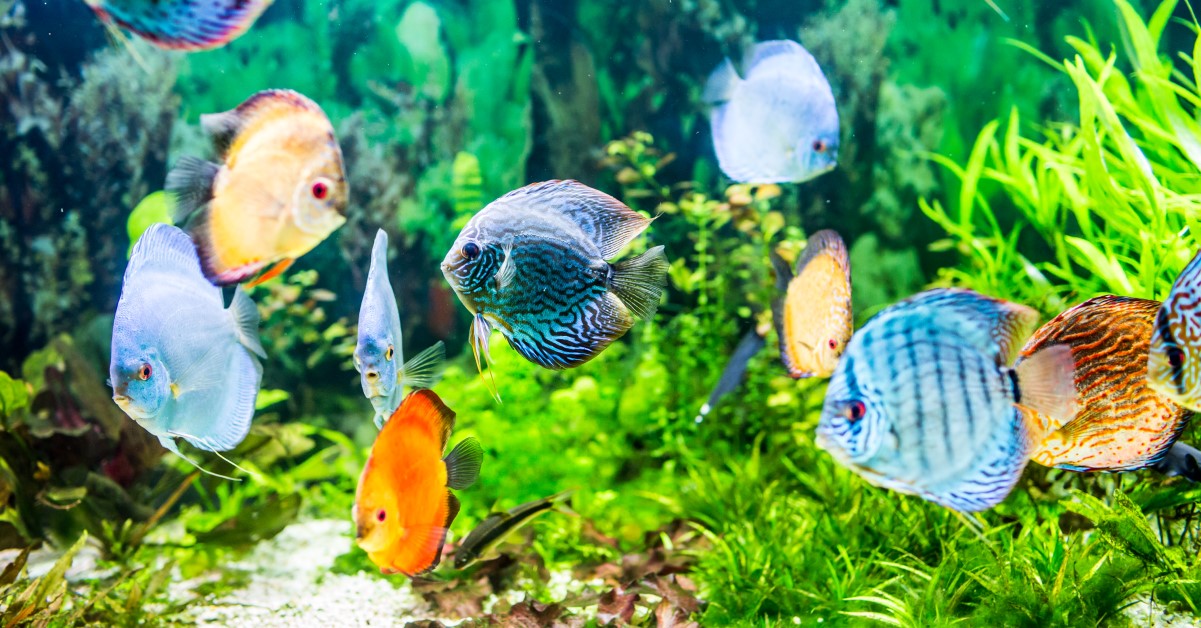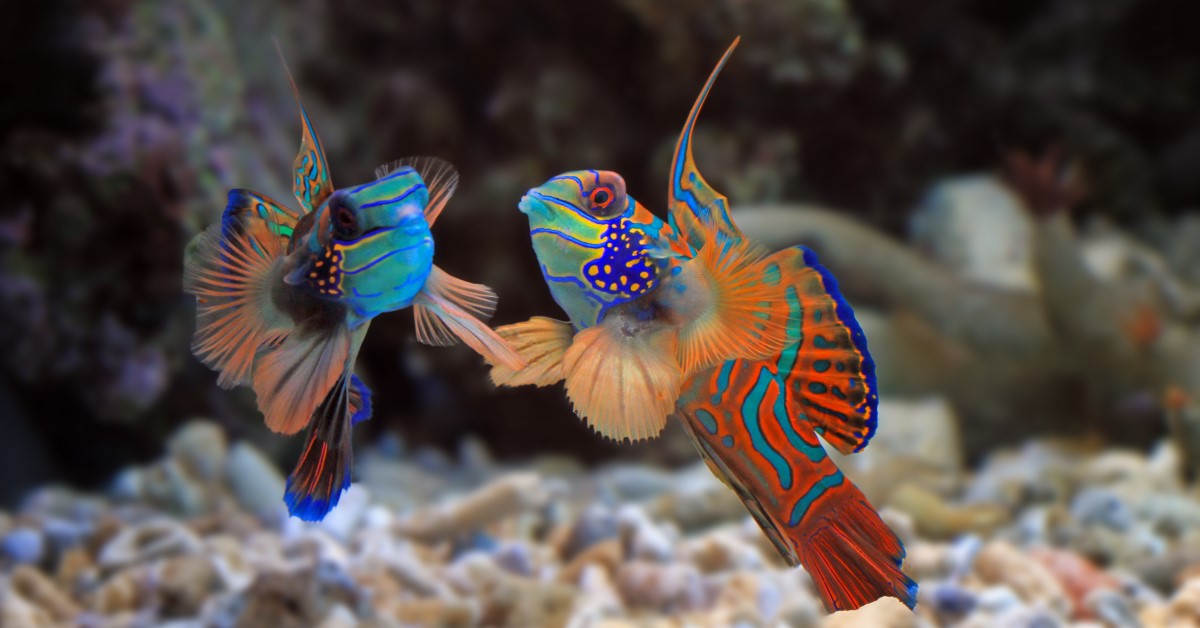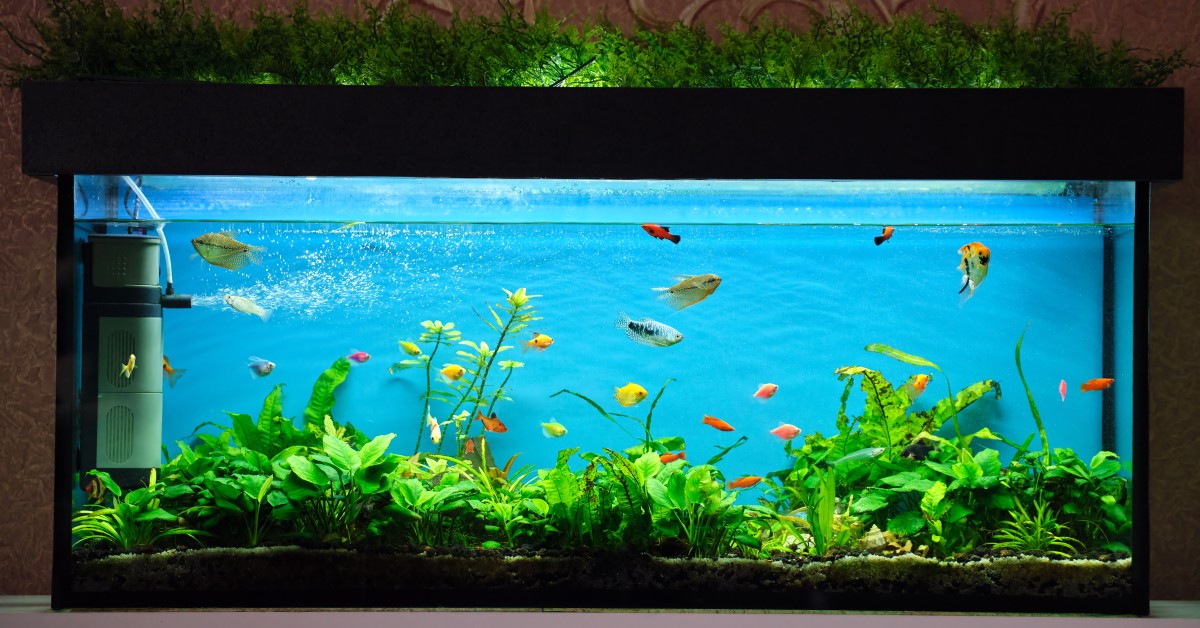Something's Fishy
Goldfish or exotic, fish can be a lot of work, but they can be a lot of fun too!

Congratulations, you’re going to be a fish parent! While your role may not be as interactive as that of a dog or cat caretaker, there are some important skills—such as tank set-up and maintenance—you’ll need to master to ensure a happy, healthy home for your fish. Fish are fascinating to watch and their delightful colors and vast varieties make them a great pet for both children and adults alike. It takes more work than most people realize to prepare an aquarium and keep this environment clean, healthy and a place for your fish to thrive.
The cost to set up a 20-gallon tank, filters and air pump, stand, light & cover, gravel, plants, fish and food will cost you about $200 to $250, with the feeding costs very low approximately $15-$20 annually.
Are you familiar with the image of a single goldfish in a bowl? That’s a great example of exactly how fish SHOULD NOT be kept. The ASPCA recommends a 20-gallon-aquarium for beginners. You may be tempted to get a 10-gallon tank, but please keep in mind that it will be easier to maintain healthy water conditions with a larger tank—and your fish will appreciate it, too. The experts at your aquarium store can help you select fish who will get along with each other and can thrive in a cold water tank. There are several things to remember when selecting a location for the tank: choose a place that is near your water source which will make it easier to keep the tank clean since a 20-gallon aquarium filled with water and gravel weighs more than 200 pounds. Do not place the tank in direct sunlight since this makes it harder to control the temperature and may cause too much algae to grown in the tank, making it necessary to clean it more often. Your fish should not be subjected to rapid and/or wide temperature swings, so take care to keep the tank out of the direct, hot sun and away from heating and cooling vents. Because of the weight of the tank once filled, make sure you select a location that is sturdy such as a table or counter.
Once you ’ve chosen the spot for your aquarium, it’s time to start preparing it for your fish. When you fill your aquarium, use clean tap water and let it stand for several days to "age" the water and allow some of the chemicals found in tap water to evaporate. You can also buy a chemical neutralizer at the pet supply store which you can add to the water to help ensure the safety of the water for your fish. Most fish are happiest in water that has a near-neutral pH level of around 7. Test your water with a kit from the pet supply store. Some fish require water that's more or less acidic or alkaline, so ALWAYS ask someone at the aquarium shop if you are not sure. They'll tell you how to adjust the water in your aquarium to suit the variety of fish you have chosen. Once your aquarium is set up and running, you'll need to remove several gallons of water every week or two and replace it with clean, aged water. This helps to remove any chemicals that have built up.
Now that your tank is full of water, it is essential to monitor and maintain a safe and healthy water temperature of approximately 78-82 degrees Fahrenheit for your tropical fish. It may be necessary to purchase an aquarium heater (make sure it's the right size for your tank) and a thermometer for the tank. Once the tank is filled with water—but BEFORE you put the fish in—put the heater in the tank and plug it in. Start at a low temperature and gradually increase the setting over a couple of days.
When the heater keeps the water at the correct temperature, you’re ready to put your fish in their new home. About a week after the tank has been set up, start your underwater community with a few hardy fish, such as platys. These fish will provide the bacteria needed for a healthy tank. Once they've settled in after a week, add a couple of fish every week or so, making sure you don’t overcrowd the tank. Start your tank with 3 to 4 small- or 1 to 2 medium-sized fish. They’ll be in sturdy plastic bags when you buy them. Simply float these bags in the tank for 15 to 30 minutes, so that the temperature of the water in the bag is the same as the temperature of the tank. Carefully open the bags and let your fish swim out on their own. If you want to add more fish and if your tank can support it, add a couple of fish every week until the tank is complete. One thing people often do when setting up an aquarium for the first time is to put “too many fish” into the tank all at once. An old rule of thumb to follow is to have one inch of fish per gallon of water. That means, for example, you could have 10 one-inch fish in a 10-gallon aquarium or five two-inch fish in the same size tank.
One of the key elements in maintaining a healthy home for your fish is to make sure you have one or more filters in the tank to remove waste and chemicals. No matter what kind of filter you get, remember to rinse activated charcoal to remove any dust before placing it in the filter.
Here are the most common kinds of filters:
Box Filter: Shaped like a box, this filter is filled with activated charcoal and a special fiber. Place it in the corner of the aquarium or attach it to the inside wall. The box filter is good for a 10-gallon aquarium, temporary aquarium setup, nursery tank for baby fish or isolation tank for sick fish. On the plus side, it's easy to remove and clean but doesn't get many points in the looks department.
Under gravel filter: This flat plastic "platform" is placed on the bottom of the aquarium covered with gravel. Water is filtered through the gravel, under the platform, and up through tubes; bacteria cultures in the gravel then go to work to break down fish poop. This kind of filter is good for 10- to 20-gallon tanks if there's adequate water flow. Since the filter is hidden, it won't take away from how good your tank looks, and the waste that gets trapped in the gravel makes a yummy snack for any plants rooted there. On the minus side, you'll need to break down the aquarium to clean under the platform.
Outside Filter: This filter hangs on the side or back of the tank. Water is drawn through a tube into a box containing filter medium and activated charcoal. It works great and is easy to clean—just make sure you get the right size for your tank.
Decorating your tank:
Fish may not care if their gravel is color-coordinated, but they’ll greatly appreciate a “hiding” place to chill out. You can use a clean, cracked upside-down flowerpot or arrange aquarium rocks into a cave; there’s also a variety of tank décor available at the pet supply store such as plastic plants that provide great camouflage, too. The gravel in your aquarium is not just there to make it pretty; it has a lot of important jobs. It provides a place to live for the helpful bacteria that treat impurities in the water. It also offers a place for plants to root. Make sure you pre-treat your gravel before placing it in your aquarium, by rinsing it thoroughly with running water to remove dust and small particles. Use coarser gravel if you have an underground filter and finer gravel if you are using an outside filter. If there are plants in your aquarium, avoid very fine gravel, which may pack too tightly for roots to grow and spread. You'll need about one pound of gravel for every gallon of water. If your aquarium holds 10 gallons, you'll need 10 pounds of gravel.
Lighting and safety:
You will also need a cover for your aquarium to prevent things from falling into the tank as well as helping to keep your fish from jumping out. A light fixture is also necessary to limit water evaporation and to help plants grow. Try to use a fluorescent light fixture rather than an incandescent one which gives off heat and will make it harder to keep the temperature constant. Place the light on a 12-hours on and 12-hours off cycle.
Feeding time:
One of the most enjoyable things about caring for fish is watching them at feeding time. There are very good commercial fish foods available, such as dry flakes which provide a balanced diet, and fresh foods such as live brine shrimp, bloodworms, and tubifex worms which provide variety. If you are uncertain which is best for the type of fish in your aquarium, check with your local pet supply store which can provide information to help you decide which is best for you? Remember when it comes to fish nutrition: DO NOT OVERFEED! Excess food will fall to the bottom of the tank and spoil, reducing the water quality. It is best to feed several small meals daily, just enough so the fish eat everything before it falls to the bottom.
A regular maintenance routine to keep your fish healthy:
Daily: In addition to turning on and off lights and feeding, you will need to monitor the water temperature. Coldwater tanks do not require a heater, but you will want to ensure that the temperature remains relatively constant. An inexpensive liquid crystal thermometer that attaches to the outside of the tank will work great. FYI, goldfish can thrive at water temperatures between 50 and 78 degrees Fahrenheit.
Weekly: Every week or two remove several gallons of water from the tank and replace it with clean, pre-aged water. This will help remove chemicals that build up in the aquarium and that are not eliminated by evaporation or filtration. We also recommend that you test the water quality with a kit from the pet supply store weekly, and scrape any algae that have built up.
Monthly: Clean the filter or replace the charcoal and filter pads monthly. And if you have plants, it’s time to prune them.
And one final precaution! Goldfish are beautiful, but they also tend to be messy, with very hearty appetites. This translates into a high output of ammonia, so you'll need to be very careful about maintaining water quality. That involves frequent water changes, high-capacity filtration, and regular water tests.
Ready to start saving money on pet wellness care?
Then take a look at Mint Wellness, the pet wellness plan that provides fast reimbursement on routine pet care. Save on vaccinations, wellness exams, preventatives, dental, and more!
Learn More


